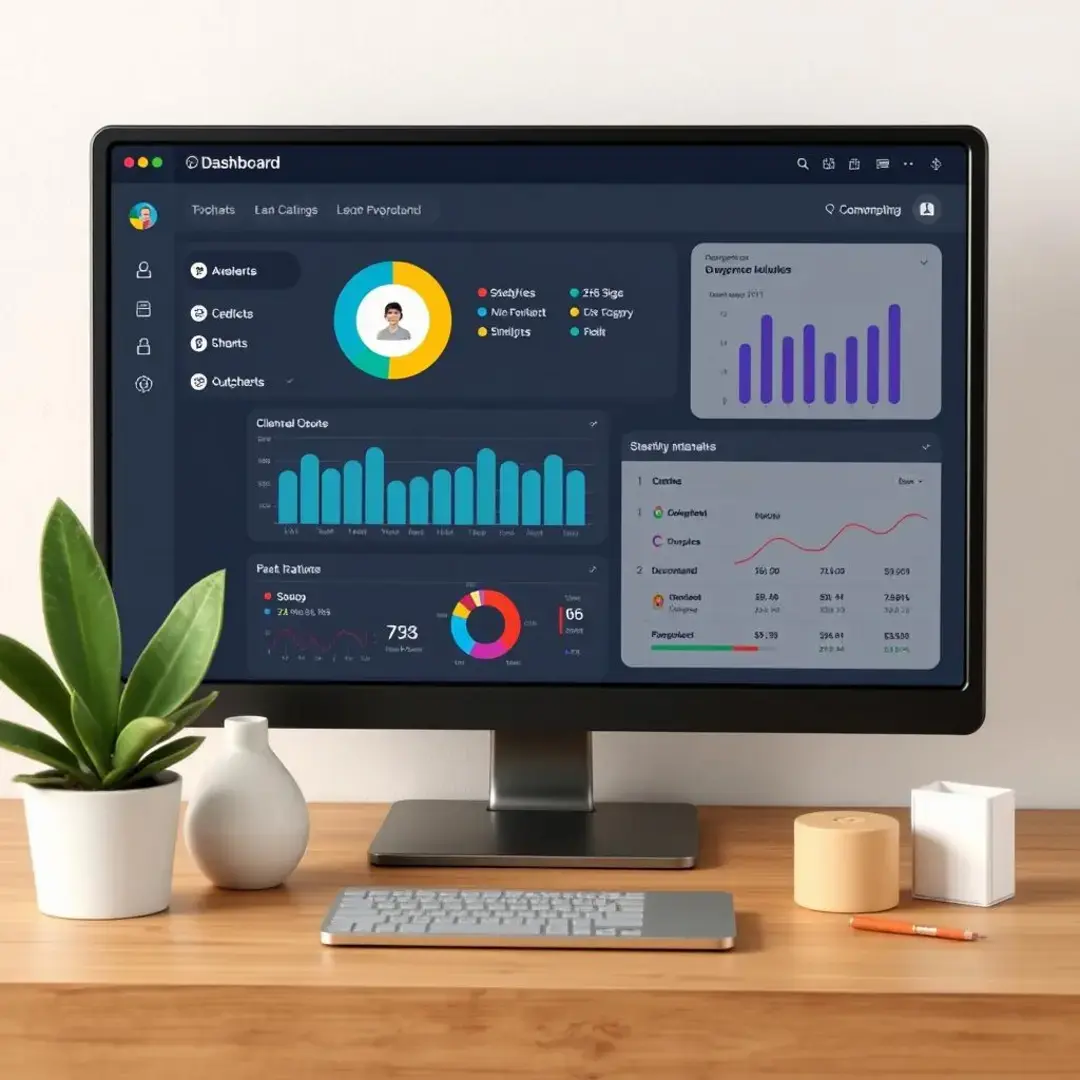CRM System: Streamlining Client Interactions
Understanding Advanced CRM Functionalities

Workflow Automation for Complex Processes
In today’s fast-paced business environment, efficiency is imperative. Workflow automation is a feature that enables organizations to streamline complex processes, ultimately saving time and minimizing errors. By automating mundane tasks, teams can redirect their focus towards strategic initiatives. This not only enhances productivity but also improves client satisfaction as interactions become more timely and relevant.
Lead qualification can often be a laborious process involving countless hours of manual analysis. With CRM systems, automation simplifies this by using predefined criteria, scoring leads based on their engagement and potential. This means that sales teams can concentrate their efforts where they matter most, ensuring that high-potential leads are nurtured effectively. Ultimately, this leads to higher conversion rates and improved business outcomes.
Another critical automation aspect is the follow-up process. Automated reminders can help sales representatives stay on top of their communications without the fear of letting opportunities slip through the cracks. This streamlined approach not only fosters stronger client relationships but also leads to increased sales efficiency, transforming prospects into loyal customers.
Customization is key in any successful CRM system. Organizations can set unique triggers and actions based on specific client interactions, ensuring tailored responses that resonate. For instance, if a client reaches a milestone or expresses interest in a product, the system can automatically initiate a tailored marketing message. This personalized touch can set businesses apart in a crowded marketplace.
Advanced Reporting and Analytics
Understanding client behaviors and market trends is vital for sustained business growth. Advanced reporting and analytics functions within CRM systems equip organizations with the insights they need to make data-driven decisions. Custom reports allow for granular insights, shedding light on what works and what doesn’t, and helping refine strategies for better performance.
The capability to create custom reports tailored to specific business needs is invaluable. Companies can analyze a myriad of metrics, from sales performance to customer satisfaction. This level of detail facilitates better strategic planning and helps in identifying trends that could impact future interactions with clients.
Predictive analytics takes this a step further by using historical data to forecast future behaviors. By identifying patterns, businesses can anticipate client needs and adjust their marketing strategies accordingly. This proactive stance not only improves service quality but also bolsters client loyalty as businesses appear to be more in tune with their clients’ preferences.
Furthermore, integration of CRM data with other business intelligence tools can multiply insights. This connectivity allows companies to cross-reference client data with marketing efforts, sales results, and overall business operations. Ultimately, this holistic view aids in strategic decision-making and provides a competitive edge in varying market landscapes.
Integrating CRM with Other Business Systems
For a CRM system to be truly effective, it needs to serve as a hub for all business functions. Integration with other systems like marketing automation platforms, accounting software, and more ensures that all aspects of business operations work in harmony. This interconnectedness not only fosters improved data accuracy but also streamlines processes across departments.
Connecting CRM with marketing automation platforms allows teams to share data seamlessly and launch campaigns that are highly targeted. This synchronization results in more powerful marketing efforts and a cohesive brand message. By tracking client responses through the CRM, teams can get real-time feedback, ensuring that future marketing strategies are as effective as possible.
Moreover, integrating CRM with accounting and finance tools facilitates improved forecasting and budgeting. This dynamic ensures financial departments stay informed about client status, which in turn aids in cash flow management. With up-to-date financial insights, businesses can make confident decisions regarding investments and expenditures.
For organizations with specific needs, crafting custom integrations through APIs is essential. This capability allows for a tailored ecosystem where all systems communicate effectively according to unique business requirements. By employing APIs, businesses can ensure that their CRM is not just a standalone tool, but an integral part of their overall operational strategy.
Optimizing CRM for Maximum Efficiency

Data Management and Segmentation
Efficient data management is at the heart of a successful CRM. Organizations need to validate and cleanse their data to maintain accuracy and relevance. This process not only boosts efficiency but also ensures that teams are working with the best possible information when interacting with clients.
Employing advanced data cleansing techniques can significantly enhance data quality. By identifying duplicates, inaccuracies, or outdated information, organizations can ensure that their databases provide accurate insights. Clean data leads to more reliable reports, fostering better decision-making processes and client interactions.
Segmentation is crucial in ensuring that marketing efforts resonate with specific client groups. By creating dynamic segments, businesses can deliver targeted campaigns that speak directly to clients’ needs and preferences. This tailored approach boosts engagement rates and enhances the likelihood of successful conversions.
Incorporating data enrichment tools further enhances client profiles by adding valuable information from various sources. This enriched data provides a more complete view of clients, enabling businesses to tailor their offerings significantly. Consequently, organizations can develop more informed strategies that align with clients’ expectations and behaviors.
Personalizing the Client Experience
In an era where customization is paramount, personalizing the client experience is essential for success. CRM systems allow organizations to leverage client data to craft individualized communication and marketing strategies. This personal touch can significantly enhance user experience, making clients feel valued and understood.
Utilizing CRM data enables businesses to engage clients with messages that resonate with their interests and history with the brand. By tailoring communications, businesses can enhance client satisfaction and build loyalty. This deeper connection can lead to increased referrals and repeat business, ultimately benefiting the bottom line.
Automating personalized email campaigns based on client data is another way to increase engagement. These campaigns can be triggered by specific client actions, ensuring timely and relevant communications. By simultaneously nurturing leads and maintaining contact with existing customers, businesses optimize their marketing efforts and maximize effectiveness.
Moreover, providing personalized client portals where clients can access their relevant information enhances the overall experience. These portals can include tailored offers, access to resources, and direct communication channels with business representatives. When clients feel empowered and catered to, their loyalty is often strengthened.
Improving Team Collaboration and Communication
A CRM system is not just beneficial for client interactions; it can also enhance team collaboration and communication. Internal workflows can be facilitated through effective CRM tools, allowing teams to manage tasks and communicate efficiently. This collaborative spirit is vital for ensuring that everyone is aligned in achieving common business goals.
Using CRM systems for internal communication ensures that important updates and tasks are shared among team members in real-time. This keeps everyone informed and reduces miscommunication, allowing for more synchronized efforts when serving clients. Centralizing communications through the CRM helps teams remain organized, improving overall productivity.
Moreover, the integration of CRM with popular collaboration tools enhances team connectivity further. Teams can utilize familiar platforms while directly accessing CRM data, creating a seamless workflow. This fosters a more collaborative environment where information is readily available, ultimately improving decision-making processes.
Implementing role-based access control within a CRM ensures that sensitive data is accessible only to those who need it. This feature enhances security while allowing team members to view relevant information for their roles. By maintaining data integrity and security, organizations can safeguard their information while enhancing overall efficiency.
Advanced Strategies for CRM Success

Leveraging AI and Machine Learning
The future of CRM is undoubtedly interwoven with artificial intelligence and machine learning. These technologies can revolutionize client interactions by providing deeper insights into customer behaviors and preferences. By harnessing the power of AI, organizations can make informed decisions that drive growth and client satisfaction.
AI-powered chatbots represent a game-changing addition to customer support. They can handle a multitude of queries instantly, providing clients with immediate assistance at any time of the day. This not only enhances the user experience but also frees up human representatives to handle more complex inquiries, improving overall service efficiency.
Machine learning algorithms can analyze vast amounts of data to predict which leads are more likely to convert. This helps businesses prioritize their outreach efforts, focusing on the prospects with the highest potential. By employing such targeted strategies, organizations can maximize their resources and improve their sales outcomes.
Furthermore, predictive analytics extends deeper insights for forecasting client needs and behaviors. Businesses can anticipate market shifts and adapt their strategies accordingly. This foresight gives a competitive edge, allowing organizations to stay ahead in a rapidly evolving business landscape.
Ensuring Data Security and Compliance
As reliance on data grows, ensuring its security and compliance with regulations is critical. Organizations must implement robust security measures within CRM systems to protect sensitive client and corporate information. Maintaining compliance with data privacy regulations not only safeguards clients but also enhances trust between businesses and customers.
Employing advanced data security measures such as encryption and multifactor authentication is essential. These protocols help mitigate risks associated with data breaches and data loss. For organizations, the focus on security not only protects their assets but also builds credibility in the eyes of clients.
Compliance with data privacy regulations, such as GDPR and CCPA, is non-negotiable for any business handling client data. By establishing protocols that adhere to these regulations, companies can avoid hefty fines and legal complications. This commitment to ethical practices enhances the business’s reputation and fosters long-lasting client relationships.
Effective management of user access and permissions is another key aspect of data security. Ensuring that only authorized personnel have access to sensitive information minimizes the risk of internal breaches. This approach not only maintains data integrity but also promotes a culture of responsibility within the organization.
Staying Ahead of the Curve
In the constantly evolving world of CRM, staying ahead of trends and innovations is critical for success. Organizations must regularly evaluate their CRM functionalities and updates to ensure they are utilizing the best tools available. This commitment to growth not only enhances operational efficiency but also ensures ongoing client satisfaction.
By actively monitoring emerging trends in CRM technologies and practices, businesses can adopt new strategies that further streamline operations. Whether it involves incorporating new features or employing innovative strategies, staying informed can position organizations as leaders in their field. This proactive stance fosters a culture of continuous improvement, which is essential for long-term success.
Organizations should regularly evaluate new CRM features and functionalities to identify potential benefits. The technology landscape is ever-changing, and being adaptable allows businesses to leverage new advancements. Through careful evaluation, companies can incorporate tools that cater specifically to their operational needs, enhancing overall effectiveness.
Finally, engaging with industry events and communities is an invaluable way to glean insights and strategies from peers and leaders. Networking opportunities can spark ideas and encourage collaboration, leading to innovative approaches that can enhance CRM use. By staying active within the community, organizations not only learn but also contribute to the collective knowledge within the industry.












